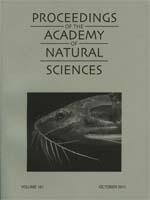Long-term observations of a marine planktonic plicate Thalassiosira species, T. cedarkeyensis Prasad, from the Gulf coasts of Florida, Alabama, and Mississippi and the Atlantic coasts of Florida and Georgia demonstrate its wide occurrence in the southeastern United States and its ability to form extensive blooms. We also report for the first time its ability to form typical Thalassiosira chains, linking sibling cells by threads of chitin. A closely related and co-occurring diatom, T. livingstoniorum, is described on the basis of investigations conducted during 2000–2011 as a new species from many localities in Apalachee Bay on the Gulf coast and Indian River Lagoon on the Atlantic coast of Florida. It differs from T. cedarkeyensis in areola density, presence of continuous cribra on loculate areolae, arrangement and distribution of valve processes, and the number of satellite pores surrounding the valve-face fultoportulae. We have not yet found any evidence of chain formation in T. livingstoniorum. Thalassiosira cedarkeyensis and T. livingstoniorum can be easily distinguished in Naphrax-mounted preparations in light microscopy (LM), and they represent two different groups (lineages?) of plicate species with reference to internal cribrum structure of the loculate areolae. Their differences may justify placement in two different genera. Although T. cedarkeyensis (which has individual cribra on the proximal siliceous layer like T. hyperborea) is abundant and widespread on the Gulf and Atlantic coasts of the southeastern United States, T. livingstoniorum (which has continuous cribra like T. lacustris) has been found, thus far, only in Florida coastal waters. Comparisons are made between these two species and the other morphologically similar extant and extinct plicate species. Thalassiosira livingstoniorum and T. cedarkeyensis, although widespread and frequently encountered during warmer months, may be easily overlooked sources of primary production in the nutrient-rich northeastern Gulf of Mexico.
How to translate text using browser tools
1 October 2011
Plicate Species of the Diatom Genus Thalassiosira (Bacillariophyta) from the Atlantic and Gulf Coasts of Southeastern United States, with the Description of T. livingstoniorum sp. nov.
Akshinthala K. S. K. Prasad,
James A. Nienow,
Paul Hargraves
ACCESS THE FULL ARTICLE

Proceedings of the Academy of Natural Sciences of Philadelphia
Vol. 161 • No. 1
October 2011
Vol. 161 • No. 1
October 2011
diatom blooms
Econfina estuary
Fenholloway estuary
Gulf coast of Florida
Indian River Lagoon
plicate valves
T. livingstoniorum sp. nov.




